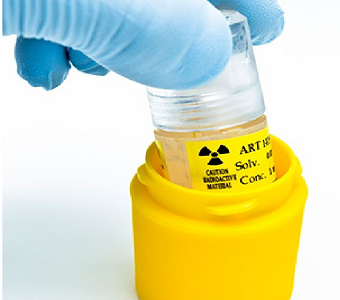Updated to reflect Synergy’s first quarter financials.
- Synergy’s phase 2 IBS-C results were, in our view, better than expected. But the market took a dim view of the stock on Wednesday for a number of reasons, outlined here.
Synergy Pharmaceuticals (SGYP) released positive results from a phase 2 study of lead candidate plecanatide on Wednesday morning. The drug improved constipation and bowel pain in patients with Irritable Bowel Syndrome with Constipation (IBS-C), and the company will move forward with a phase 3 study later this year. Two large phase 3 studies of the drug are already underway in Chronic Idiopathic Constipation (CIC), and with proof of concept in IBS, Synergy is well-positioned as a pure-play gastrointestinal company. Despite these strong proof of concept results, however, high expectations, a tumultuous sector and overhang from the company’s need for capital this year kept the stock in the doghouse on Wednesday.
Positive results
Synergy tested plecanatide at 0.3, 1.0, 3.0, and 9.0mg dosages in patients who met Rome III criteria for IBS-C. The trial met its primary endpoint, with patients on the 3mg and 9mg doses (confirmed by the company) demonstrating a statistically significant improvement in Complete Spontaneous Bowel Movement (CSBM) frequency over the course of the study. It was not clear from the press release whether all doses achieved the primary endpoint. A 3mg dose and a 6mg dose are being tested in the current phase 3 CIC studies.
Most importantly, when compared to placebo, patients taking plecanatide at 3.0mg once daily experienced a statistically significant improvement in Worst Abdominal Pain and met the FDA’s definition of “overall responder”(≥30% reduction in worst abdominal pain and increase of ≥1 CSBM from baseline in the same week for 6 of the 12 weeks). Hitting this secondary endpoint with statistical significance was unexpected and is reassuring given the FDA’s guidance on IBS-C endpoints.
This was a dose-ranging POC study, thus SGYP focusing on the 3.0mg dose should not be disconcerting in light of the higher tested dose (9.0mg). Presumably the 9.0mg dose produced some unwanted side effects. We would not be surprised to see SGYP test a 6mg dose in the forthcoming IBS-C study considering the same was done in the CIC studies.
Synergy investors are looking for differentiation from Ironwood Pharma’s (IRWD) marketed guanylate cyclase-C (GC-C) agonist, Linzess (linaclotide), and these data support previous results: that plecanatide offers an improved tolerability profile. 9.3% of plecanatide patients dosed at 30mg experienced diarrhea, a meaningful improvement over the 20% seen in Linzess’ phase 3 IBS-C trials. Ironwood’s first quarter update on Tuesday indicated that Linzess prescriptions are tracking well (see PropThink’s take here).
So why the negative price action?
A couple of reasons:
– Synergy needs money and everyone knows it. With two ongoing phase 3 CIC trials and the presumed development of a phase 3 IBS-C trial, Synergy’s cash burn will increase. Synergy ended 1Q14 with $70.6 million in cash/equivalents, less than one year’s runway based on a FY13 burn of $62M. The company burned $19M in 4Q13 and $19.9M in the first quarter of the year, (a $78M run-rate).
Synergy put in place an at-the-market (ATM) facility with Cantor Fitzgerald in early March. The ATM provides up to $50M in liquidity. As of May 9, Synergy had $48.6 million available unsold under this ATM facility. With two, now three, large trials getting off the ground, the company’s cash burn will increase materially and the company will need to return to the markets for an offering in the not-too-distant future. Though the ATM gives the company flexibility this year, a chance to own the stock at a discount may keep many on the buyside on the sidelines.
– Expectations were high for these results given the plethora of evidence that binding/activating the GC-C receptor improves constipation in IBS-C and CIC. Although we believe statistical significance on the secondary endpoint mentioned above was unexpected, and a quality side effect profile speaks to differentiation from Linzess, the market wants bigger surprises in the current biotech tape. The fact that these results were largely expected to be positive, and that SGYP needs money, “sell the news” was apparently a crowded trade. The rally that many expected barely lasted beyond the open on Wednesday.
Despite a disappointing market reaction to positive mid-stage results, SGYP is a pure-play gastro company with a clear value proposition: a shot at the large CIC and IBS-C markets, and a competitor in Ironwood/Forest Labs (FRX) prepping the market with Linzess. (Read the full explanation here.) We continue to like the longterm investment thesis.
Synergy’s next milestone is phase 2 results for its next-generation GC-C agonist, SP-333, in opioid-induced constipation this summer. We would also look for analyst upgrades/reiterations in the coming days.
One or more of PropThink’s contributors are long SGYP.




